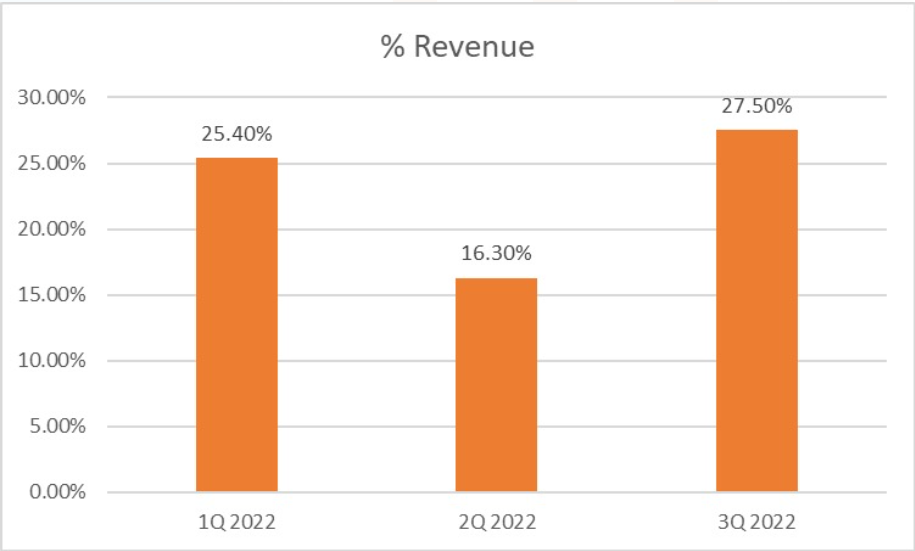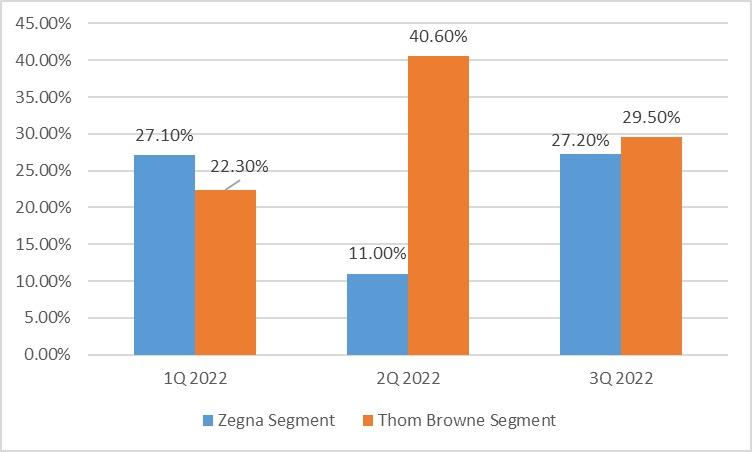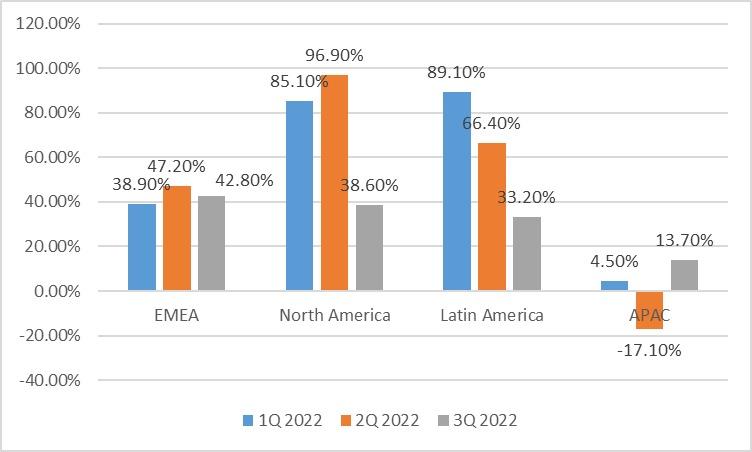Introduction
Zegna is an Italian fashion and textile company founded by Ermenegildo Zegna in 1910 in Trivero, Biella province, and founded in the Piedmont region of North Italy. The firm aims to give its customers exceptional products that mirror its tradition of fine craftmanship characterized by exclusive style content and designs that preserve excellent manufacturing quality. The corporation can accomplish this by sourcing top-quality raw materials, the thorough finish of every piece, and the means of delivery to its customers. The paper will analyze the Zegna brand’s operating segments, position on sustainability, future strategy, current performance, target consumers, industry market analysis, and business opportunity.
Brand Analysis
Zegna Group operates under various brands, including Zegna, Thom Browne, and Luxury Textile Laboratory Platform segments, to ensure the effective running of its business. The Zegna brand aims to create, design, and distribute luxury accessories and menswear using the Zegna brand (“Zegna Brand,” 2022). Thom Browne is a widely acknowledged brand under the Zegna Group that distributes menswear, womenswear, and accessories. It aims to redefine modern tailoring, also known as the suit (“Thom Browne Brand,” 2022). The Zegna Group has developed an exceptional “Made in Italy luxury Laboratory Platform” over the years using acquisitions of historic Italian corporations, with everyone focussing on its product sector (“Luxury Textile Laboratory Platform,” 2022). The company has done this to ensure that it can produce high-quality fabrics while maintaining the Italian supply chain’s distinctiveness under the craftmanship tag.
Successes
The Zegna group’s various successes have helped the organization maintain a competitive edge in the fashion market. Firstly, the Zegna Corporation has a broad geographic presence in diverse locations with over 500 stores in 80 nations worldwide, increasing its revenue by 22.9% from the previous year, as shown in Figure 1 (Ermenegildo Zegna Group, 2022). Secondly, the Zegna Group contains a comprehensive product portfolio ranging from womenswear to menswear. It allows the company to enlarge its customer base and avoid the losses that can be incurred following one product category.
Figure 1.0: Zegna financial performance
Failures
The company is plagued with several failures that hinder its overall performance. First, Zegna Corporation lacks effective waste management approaches and challenges incorporating sustainability in business operations (Ermenegildo Zegna Group, 2021a). Following this, the organization largely contributes to environmental pollution, which can negatively impact brand image among customers. Second, it experiences the inability to understand customers’ expectations and needs, which affects effective decision-making and narrows its customer base.
Stance on Sustainability
Over the years, the company has committed to efficiently contributing to a sustainable world. One way the company does this is through its Use The Existing policy, which aims at accomplishing the dream of producing zero waste possible (“#usetheexisting,” 2021). This strategy increases the utilization of technical fabrics and wool manufactured from post-consumer and pre-existing sources without wastage. Furthermore, the Zegna Group joined the fashion pact, a worldwide alliance under the fashion and textile industry committed to reducing global warming, restoring biodiversity, and protecting the ocean. Based on this coalition, the company has been able to reduce its energy consumption from 359k GJ in 2020 to 342k GJ as of 2021(“Fashion Pact,” 2021). Through this, the company has been able to show its contribution towards sustainability.
Strategy for the Future
The company established the One Brand strategy in 2021, which aims to incorporate all current segments under one brand with a new logo as well as a unique signifier. The new One Brand approach is designed to be instantly recognizable and iconic, enabling the company to completely focus on its collection and promote a new luxury leisurewear proposition, which helps expand its customer base (Ermenegildo Zegna Group, 2021b). Additionally, the One Brand strategy will allow the organization to create new classic products that can be effortlessly recognized, such as the firm’s Triple Stitch shoes.
Current Situation
The Zegna Corporation has reported robust growth in the third quarter of 2022. As shown in Fig 2, Zegna was able to record an increase of 27.5% year over year, up from the second quarter, which had 16.3% (“Ermenegildo Zegna Group strong revenue growth,” 2022). The Thom Browne segment sales dropped in the third quarter of 2022 by 29.5% compared to the second quarter, while the Zegna segment generated 27.2%, up from the second quarter, which can be seen in Figure 3 (Ermenegildo Zegna Group, 2022). The key performance indicators were operations in EMEA, which yielded 42.8% compared to the Americas and APAC regions, as shown in Figure 5 (Ermenegildo Zegna Group, 2022). Therefore, it can be deduced that the company’s current situation depicts significant growth.



The company developed the environment, social, and governance (ESG) strategy, which entails the company’s commitment to tackling climate change, materials traceability, and providing equal employment opportunities. ESG is used to strengthen the organization’s leadership position in the market by speeding the change required to warrant the survival of future generations (Ermenegildo Zegna Group, 2021a). Zegna Group is currently using the customer-centric approach to help enhance loyalty and enlarge its customer base but is faced with diverse difficulties. The customer-centric approach lacks room for innovation, considering businesses only focus on meeting customer needs, which hinders the generation of new products for market entrance, hence hindering creativity. Additionally, customer preferences are constantly changing, meaning the company will have to invest in financing, time, and staffing to keep up with the customers’ demands, increasing the operation cost.
The Consumer
The Zegna Consumer
The Zegna Group targets middle-aged customers with high disposable income due to the company’s focus on innovative, quality, and high-priced products. The gender sales of luxury products are believed to be 61% in females and 39% in males (Depper, 2017). Moreover, the brand has started aiming at younger individuals with a high disposable income following their increased impact in the fashion industry. Additionally, the company has experienced increased outlet sales, especially with price-sensitive consumers.
The Wider Consumer
Product differentiation in the company has promoted the purchase of luxury products. Moreover, the desire or wish to buy luxury goods to satisfy an individual’s value and self-concept also promotes increased sales in the company following its trusted brand name associated with style (Depper, 2017). This follows that consumers in a particular group are more inclined to use product prices to parse their wealth. Therefore, consumers tend to purchase products based on quality or desire to feed their self-image.
Market Analysis
Business normalcy was primarily crippled by the effects of COVID-19 encountered since 2019. The retail stores were forced to shut down, which had adverse impacts on the fashion industry. However, with developments in vaccines, the industry has been able to increase operations, which helps boost sales. Even with increased activities, the supply chain continues to be constrained. To curb this problem, most companies had to shift to online business to boost sales.
Additionally, environmental sustainability has increased among fashion consumers following the effects of climate change. The industry largely contributes to plastic waste, high water usage, and increased greenhouse gas emissions (Smith, 2022). Following this, customers have continued to gain awareness of the significance of sustainability and regard it as a vital factor in their buying decisions.
Business Opportunity
One business opportunity that can be utilized is using product mix and sustainability. Product mix ensures services are available at all age groups and income levels, while sustainability incorporates all preferences (Ermenegildo Zegna Group, 2021a). With population growth, companies such as Zegna can incorporate younger consumers with all income rates into their product lines. This will mean more consumption due to the enlargement of the customer base in the market and generate more profitability.
Conclusion
In conclusion, the company operates under Zegna, Thom Browne, and Luxury Textile Laboratory Platform segments. Its strengths include a vast global presence and a broad product portfolio. At the same time, its weaknesses consist of the corporation lacking the best waste management practices and the ability to understand changing customer needs. The company utilizes Use The Existing and the fashion pact to mirror its commitment to supporting sustainability. Moreover, the company implemented the One Brand strategy to integrate all segments under one logo.
The company has witnessed revenue growth of 357 million by the third quarter of 2022. Additionally, the company recorded 51% of its revenue from Great China. Furthermore, the company implemented the ESG strategy and currently uses the customer-centric approach plagued by a lack of innovation and changing preferences. The company targets high-income, middle-aged customers and uses product differentiation to boost its sales. The fashion industry has been primarily affected by the COVID-19 pandemic, forcing companies to shift to online business. A business opportunity arises in generating a product mix incorporating all age and income groups.
Reference List
#usetheexisting – upcycling project (2021) Zegna Group. Web.
Depper, H. (2017) ‘Brand Management.’ Web.
Ermenegildo Zegna Group (2021a) Ermenegildo Zegna Group sustainability report 2021. rep. Web.
Ermenegildo Zegna Group (2021b) ‘Investor Presentation.’ Web.
Ermenegildo Zegna Group (2022) ‘3Q 22 Revenues.’ Web.
Ermenegildo Zegna Group reports strong revenue growth in third quarter of 2022 (2022) Business Wire. Web.
Fashion pact (2021) Zegna Group. Web.
Luxury Textile Laboratory Platform (2021) Zegna Group. Web.
Smith, P. (2022) Sustainable fashion worldwide-statistics & facts, Statista. Web.
Thom Browne Brand (2022) Zegna Group. Web.
Zegna Brand (2022) Zegna Group. Web.